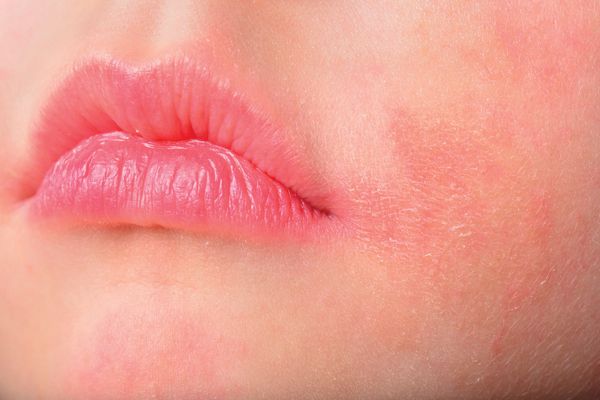Seborrhoea
Seborrhoea— Seborrhoeic Dermatitis
Seborrhoea is a common skin disease, which is manifested by chronic inflammation in the skin. The disease damages the upper layers of the skin, causing scaling, redness and peeling skin. It appears in areas of the body where there are glands that secret sebum: the scalp, face, ears, frontal upper chest, and skinfolds (armpits, groins, beneath the breasts and in the navel). The source of the problem is the increased production and secretion of a fatty substance (sebum) from the skin’s sebaceous glands, which are located in the dermis. A thin duct extends from the sebaceous gland and connects to the hair follicle, the sebum is secreted through this duct and slides upon the cover of the hair follicle, and from there, it is secreted onto the skin surface, granting it its greasy appearance. Occasionally, the secreted sebum irritates the skin, causing inflammation. This combination of sebum secretion and the inflammatory process in the skin is called seborrhoeic dermatitis.
Approximately 15%–20% of the population suffers from the most common and mild form of the disease, which is characterized by dandruff on the scalp. Approximately 3%–5% percent of the people suffer from an acuter level of the disease.
The disease most often appears after adolescence, but it most commonly affects people in their 40s.
It is a chronic disease that continues for years, but there are periods of improvement, especially during the summer. In the winter, the condition usually worsens (although there are opposite cases).
In addition, there is a larger incidence of the disease in infants, among whom it appears on the skin of the scalp. This condition usually clears up spontaneously, mostly at the age of 3–6 months. Seldomly, the disease only clears up around the age of one year when the baby stops breastfeeding, as the hormones passed to the baby through the breast milk encourage the production of sebum.
Among some people, seborrhoea can be related to the development of psoriasis, and among people who suffer from neurological diseases, especially Parkinson’s disease or AIDS, severe seborrhoeic dermatitis may develop.
The Disease’s Symptoms
Seborrhea’s development is gradual, and its main symptoms are a red, burning rash, which is accompanied by dry or greasy skin scales, swelling, a yellowish sebaceous secretion and in some cases also an itchy sensation, mainly in the area of the scalp. In acuter cases, the disease is accompanied by pimples with red-yellowish scales. These symptoms mainly appear on the T-Zone of the face, on the eyebrows, the base of the eyelashes, on the areas of the mustache and beard, as well as on the scalp, inside the external ear canals and behind the ears. More seldomly, the symptoms appear on the neck, frontal chest, armpits, groins and navel.
The areas of the scalp and the face are especially rich in these sebaceous glands. The scales, which are mostly noticeable on the face and head, are created as the sebaceous dries with the keratin (the outermost layer of the skin, which falls constantly). The scales are usually fine, and have a powder-like texture, and if left untreated, they become more coarse, yellow and greasy. In addition to the aesthetic problem, the scales and the redness cause discomfort and suffering
What Are the Causes for Seborrhea?
The exact mechanism that causes seborrhea is not completely clear, but studies indicate that there are several causes involved in the disease’s onset and outbreak:
- The immune system’s defective reaction to a type of fungus called Malassezia Pityrosporum ovale, naturally found on the skin. However, it is neither a fungal nor infectious disease.
- A disruption in the operation of the hormonal system—the hypothesis that hormonal factors fulfill a role in this disease is reinforced by the fact that its incidence increases after adolescence. Several studies have identified an overactivity of the sebaceous glands as reaction to the presence of male sex hormones, which may explain the fact that the problem is slightly more common among men.
- In infants, hormones secreted from the mother to the embryo through the placenta, and the passage of hormones through breastfeeding, encourage the excessive production of the sebaceous glands. As the level of hormones in the infant decreases (within several months) and the cessation of breastfeeding, there is visible improvement in the seborrhoeic condition.
- Nutritional deficiencies, and especially deficiencies in vitamins B6, B12 and biotin.
- Food allergies may lead to the disease’s outbreak.
- Genetics.
- Patients suffering from psoriasis.
- Diseases related to the nervous system, such as: Parkinson’s disease.
- Various medications may cause seborrhoea or worsen its condition.
- Weather— for most people, seborrhea tends to worsen in the winter, while in the summer, its condition improves.
- Stress and mental pressure.
Differential Diagnosis
In many cases, it is necessary to differentiate between seborrhoeic dermatitis and psoriasis. In both cases, it is usually a genetic disposition. Moreover, red patches covered in scales commonly appear on the scalp. In psoriasis, findings will often also appear on the areas of the elbows and knees. Conversely, seborrhoeic dermatitis’s is characterized by pink areas of skin on the sides of the nose and between the eyebrows, which are usually not affected by psoriasis. In rare cases, there is a combination between psoriasis and seborrhoea, referred to by dermatologists as seborrhiasis.
